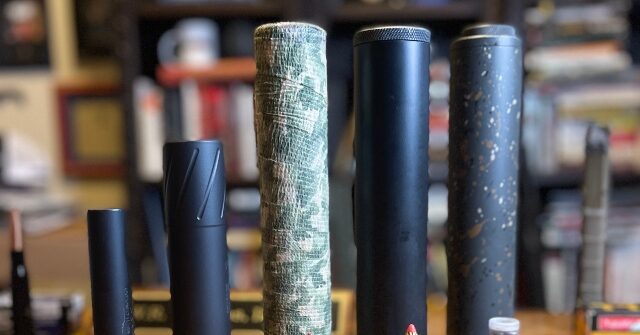
Firearm suppressors are legal to own in over 40 states, and they deliver advantages to the target shooter, the hunter, and the environment as well.
The American Suppressor Association notes that suppressors are legal to own in 42 states, and hunting with suppressors is legal in nearly all of those 42 states.
To be clear, suppressors do not erase the sound the of gunshot. Rather, they muffle it to a degree sufficient to reduce the sharp, earsplitting sound associated with a gun being fired. This offers hearing protection to the target shooter and the hunter alike, and it is also means less of a disturbance of the natural environment.
On hunts conducted with multiple hunters, the muffling effect of a suppressor is truly appreciated. Especially when the round is as big (and loud) as a 45-70 Auto or a .380 Win.
But even target shooting with smaller rounds–like the 9mm or a 5.56–prove the value of protecting one’s hearing with a suppressor.
In addition to hearing protection benefits, a suppressor reduces recoil which, in turn, improves accuracy. By reducing recoil the suppressor helps keep the gun flatter while shooting, aiding in second and third shot acquisition. (Readers who hunt wild hogs know this well, as go time during a hog hunt usually means firing multiple rounds as the beasts scatter. As multiple rounds are fired, the suppressor helps keep the recoil manageable, aiding the hunter in getting on target again and again.)
Suppressors are commonly made from titanium, aluminum, or stainless steel, and the weight of the suppressor reflects the type of metal used. The ASA points out that on average, a suppressor reduces the sound of a gunshot 20 – 35 dB.
The process for buying a suppressor is somewhat convoluted, in that it requires the purchaser of the suppressor to pay for the device up front and pay $200 to the ATF (there is a $200 federal on suppressors under the auspices of the National Firearms Act). The would-be purchaser must submit two passport style photos and fingerprints at the time he pays the $200. A Federal Firearms License (FFL) holder will subsequently file an ATF Form 4, which is the form that governs the transfer of an NFA item to an individual.
The would-be purchaser’s photos, fingerprints, and $200, are sent to the ATF and a background check is performed. The entire process currently takes eight to ten months, after which time the FFL receives a federal tax stamp which shows the transfer was approved and federal tax paid. The FFL then calls the purchaser to let him know its time to come pick up his suppressor, and the would-be purchasers fills out an ATF form 4473 and then takes his suppressor home.
The is an option to do electronic filing with the ATF, and that can speed the process of approval up by a few months.
AWR Hawkins is an award-winning Second Amendment columnist for Breitbart News and the writer/curator of Down Range with AWR Hawkins, a weekly newsletter focused on all things Second Amendment, also for Breitbart News. He is the political analyst for Armed American Radio, a Turning Point USA Ambassador, and a pro-staffer for Pulsar Night Vision. He was a Visiting Fellow at the Russell Kirk Center for Cultural Renewal in 2010 and holds a Ph.D. in Military History, with a focus on the Vietnam War (brown water navy), U.S. Navy since Inception, the Civil War, and Early Modern Europe. Follow him on Instagram: @awr_hawkins. You can sign up to get Down Range at breitbart.com/downrange. Reach him directly at awrhawkins@breitbart.com.
